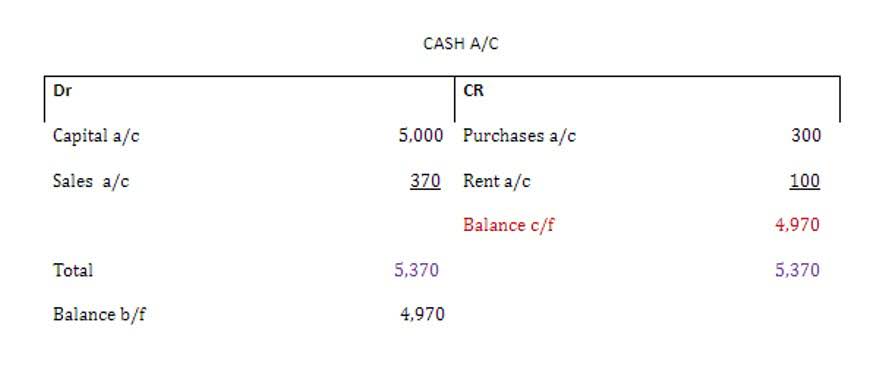
Companies that prefer debt financing to fund operations or expansion will naturally have a higher D/E ratio. Although it is quite simple, this metric is one of the keys to understanding the state that a business is in. Decisions can’t be based solely on this ratio – of course, context matters – but the debt to equity ratio is an unavoidable piece of the puzzle.
- Since this ratio can vary by industry, I recommend you understand the benchmarks for your sector when financing major projects or growth strategies.
- When interpreting the D/E ratio, you always need to put it in context by examining the ratios of competitors and assessing a company’s cash flow trends.
- Your equity is the value of your assets less the amount of your liabilities.
- A lower D/E ratio suggests the company may be leaning more on equity than debt.
- Working toward the right debt-to-equity ratio for your business is less about the exact number and more about making sure you can keep up with debt payments based on current income and equity.
- The Debt-to-Equity Ratio can also be used when assessing one’s personal finances.
Debt to Equity Formula (Type #
Those who invest in and lend money to companies worry that Bookkeeping vs. Accounting if the company fails, they won’t get their money back after the dust settles. Just like an individual whose debt far outweighs his or her assets, a company with a high debt-to-equity ratio is in a precarious state. A high debt-to-equity ratio indicates that a company is primarily financed through debt. That can be fine, of course, and it’s usually the case for companies in the financial industry. However, they may monitor D/E ratios more frequently, such as monthly, to identify potential trends or issues. Debt to equity ratio (or D/E ratio) is a financial measurement between a company’s total debt and total equity.
- Therefore, it is essential to align the ratio with the industry averages and the company’s financial strategy.
- When possible, it is also recommended to avoid taking on additional debt, as doing so would increase the individual total debt, and, therefore the D/E value.
- Total liabilities are combined obligations that a company owes other parties, including both short-term ones like accounts payable and long-term ones like certain loans.
- This means that for every dollar in equity, the firm has 76 cents in debt.
- Including it in the equity portion of the D/E ratio will increase the denominator and lower the ratio.
- Find out what a debt-to-equity ratio is, why it is important to a business, and how to calculate it.
Navigating Debt-to-Equity Ratios and Cash-Out Refinances in Changing Markets
The debt to equity ratio (or D/E) is a financial leverage ratio that is used by financial analysis, investors, and companies to assess a company’s financial health. Debt-to-equity is a gearing ratio comparing a company’s liabilities to its shareholder equity. Typical debt-to-equity ratios vary by industry, but companies often will borrow amounts that exceed their total equity in order to fuel growth, which can help maximize profits. A company with a D/E ratio that exceeds its industry average might be unappealing to lenders or investors turned off by the risk. As well, companies with D/E ratios lower than their industry average might be seen as favorable to lenders and investors.
What Is a Good Debt Ratio?
This could be a sign of a conservative financial strategy, with limited borrowing. While this may help reduce financial risk, it might also mean fewer opportunities to leverage borrowing for growth—especially when interest rates are low. In this guide, we’ll break down what the D/E ratio is, how to calculate it, and how investors can interpret it to assess a company’s financial health. The debt-to-equity ratio divides total liabilities by total shareholders’ equity, revealing the amount of leverage a company is using to finance its debt ratio formula operations.

If you’re assessing potential investment opportunities, it’s worth taking a look at a company’s debt-to-equity ratio. It’s not the only piece of research worth doing, but it does provide important information about how much risk and leverage the company has taken on. To know whether it’s high or low, you should compare it to the debt-to-equity ratio of other companies in the same industry.
What are gearing ratios and how does the D/E ratio fit in?

D/E is considered a “gearing” ratio as it’s a measure of a company’s equity to debt. Debt to equity ratio is a measure of how much debt a company has taken to finance its business operations in relation to the amount of equity on its books. The good normal balance debt to equity ratio will depend on the company, the nature of its business, its industry and other factors. All interest-bearing assets have interest rate risk, whether they are business loans or bonds.

A well-managed D/E ratio helps you stay in control, avoid overleveraging, and strengthen your long-term financial health. Long-term debts represent bigger commitments and can weigh more heavily on your financial health. Generally, an ideal debt-to-equity ratio in real estate and other capital-intensive sectors is 2.33 or so, meaning you have 70% debt and 30% equity.
